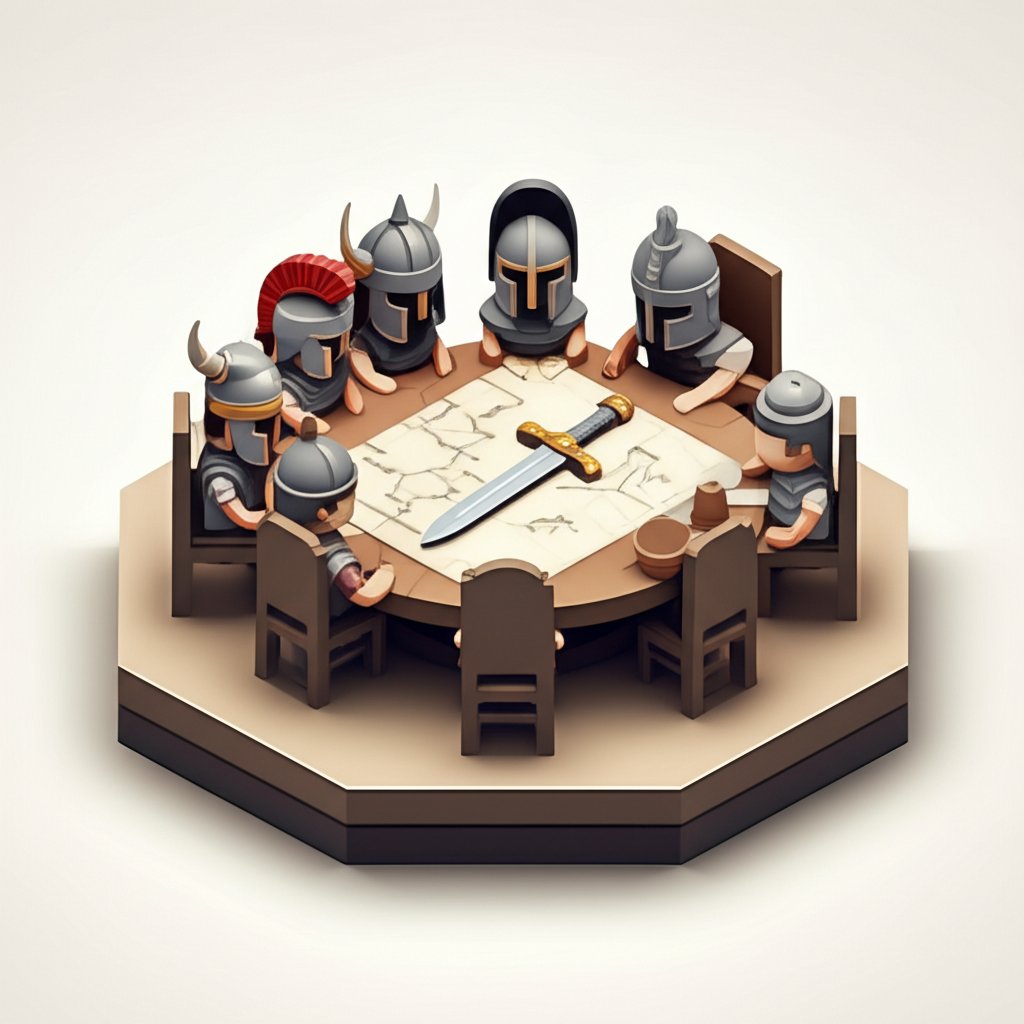Throughout the annals of human endeavor, few figures have cast shadows as long or as influential as military commanders. These extraordinary individuals, whether revered or reviled, have undeniably shaped the destinies of nations, redrawn maps, and fundamentally altered the course of military history. From ancient battlefields to modern theaters of conflict, their strategic brilliance, innovative combat strategies, and diverse leadership styles have left an indelible mark, offering timeless lessons in decision-making, resilience, and human psychology.
This article delves into the lives and minds of the most impactful historical military leaders, dissecting the master strategies they employed and exploring the profound legacies they forged. We will uncover what set them apart, how they revolutionized warfare, and why their insights remain critically relevant for understanding leadership and conflict today.
The Indispensable Role of Military Commanders in Shaping History
The story of humanity is intrinsically linked to its conflicts, and at the heart of these conflicts stand mighty military commanders. They are not merely figureheads; they are the architects of victory and defeat, the embodiment of their armies’ will, and often, the catalysts for civilization-altering changes. Their decisions, made under immense pressure, echo through generations.
Defining Greatness: Beyond Battlefield Victories
While battlefield success is often the most visible metric, true greatness in a military commander extends far beyond. It encompasses foresight, adaptability, the ability to inspire, and the wisdom to understand the political and logistical dimensions of war. A great commander molds an army, not just by force, but by cultivating loyalty, discipline, and a shared purpose. They anticipate enemy movements, exploit weaknesses, and innovate when conventional approaches fail. Their impact is measured not just in territory gained, but in the enduring influence on military doctrine, governance, and societal values.
The Nexus of Strategy, Leadership, and Impact
The most renowned historical military leaders understood that military command is a complex interplay of strategy, leadership, and the resulting impact. Strategy provides the blueprint for achieving objectives, demanding intellectual rigor and foresight. Leadership transforms that blueprint into action, requiring charisma, empathy, and unwavering resolve to motivate troops. The impact is the legacy – the new borders, the shifted cultures, the lessons enshrined in military history that continue to inform future generations. This synergy is what elevates a competent general to a legendary military commander.
Master Combat Strategies: The Art of War Through the Ages

The evolution of warfare is a testament to human ingenuity and destructiveness, significantly driven by the development of unique and effective combat strategies. From ancient formations to technologically advanced maneuvers, great military commanders have constantly pushed the boundaries of tactical thought.
Alexandrian Tactics: Speed, Shock, and Deception
Alexander the Great, an early master of combined arms, famously employed combat strategies emphasizing speed, shock, and decisive engagement. His Macedonian phalanx, a formidable infantry formation, was often used as an anvil against which his highly mobile cavalry, the Companion Cavalry, would strike as the hammer. His flanking maneuvers, such as at the Battle of Hydaspes, demonstrated a profound understanding of psychological warfare and terrain exploitation. Alexander’s ability to adapt his tactics to diverse enemies and environments set a precedent for strategic flexibility.
Hannibal’s Prowess: Maneuver and Psychological Warfare
Hannibal Barca’s brilliance in combat strategies is epitomized by the Battle of Cannae. Here, he executed one of history’s most perfect tactical encirclements, a double envelopment that annihilated a numerically superior Roman army. His use of a crescent formation, allowing his center to give way and draw the Romans deeper, followed by the envelopment by his African and Celtic infantry, showcased an unparalleled understanding of troop movement and the psychology of battle. Hannibal’s audacity and strategic deception profoundly influenced later military thinkers.
Roman Ingenuity: Logistics, Fortification, and Discipline
The Roman Republic and Empire, under commanders like Julius Caesar, perfected combat strategies centered on discipline, engineering, and logistics. Caesar’s campaigns, particularly in Gaul, highlight his mastery of siege warfare, rapid construction of fortifications (like the circumvallation and contravallation at Alesia), and maintaining highly disciplined, well-supplied legions. His ability to move large armies quickly and build strategic infrastructure allowed him to project power effectively and win protracted wars of attrition. This focused on consistent, methodical application of force, backed by superior organization.
Mongol Mobility: Unconventional Warfare and Command Control
Genghis Khan revolutionized combat strategies through his innovative use of highly mobile cavalry, psychological warfare, and an unmatched command-and-control system. His armies, masters of the steppe, employed feigned retreats, encirclements, and hit-and-run tactics that bewildered static European and Asian forces. The Mongol army’s strict discipline, efficient communication via horn and flag signals, and rigorous training enabled them to execute complex maneuvers over vast distances, dominating the battlefield through speed, coordinated attacks, and overwhelming numerical superiority at the point of attack.
Napoleonic Innovation: Grande Armée and Concentrated Firepower
Napoleon Bonaparte’s combat strategies redefined European warfare. He organized his Grande Armée into self-sufficient corps, allowing for rapid movement and independent action, yet capable of concentrating overwhelming force at critical points. His use of massed artillery, combined with aggressive infantry charges and decisive cavalry exploitation, characterized his “strategy of the central position” and ability to rapidly defeat enemy forces in detail. Battles like Austerlitz exemplify his genius in terrain analysis, timing, and the coordinated application of all arms.
Modern Strategic Thought: From Clausewitz to Asymmetric Warfare
The study of combat strategies continues to evolve. Carl von Clausewitz’s “On War” emphasized the political nature of war, the “fog of war,” and the importance of friction. Later, theorists like Alfred Thayer Mahan influenced naval strategy. In the modern era, military commanders grapple with asymmetric warfare, cyber warfare, and the complexities of insurgency. The core principles of surprise, concentration, economy of force, and objective, however, remain central to military planning, echoing lessons learned from historical military leaders of centuries past.
Diverse Leadership Styles of Historical Military Leaders

Beyond their strategic acumen, the most influential historical military leaders were masters of human motivation, employing a spectrum of leadership styles to command loyalty, inspire courage, and achieve their objectives. Understanding these styles provides critical insights into effective management and influence.
Authoritative & Charismatic: Inspiring Unwavering Loyalty
Many iconic military commanders, such as Alexander the Great and Napoleon Bonaparte, exhibited strong authoritative and charismatic leadership styles. They projected an aura of invincibility and possessed an innate ability to inspire fierce loyalty and devotion from their troops. Alexander led from the front, sharing the dangers and hardships of his soldiers, fostering a personal bond. Napoleon, through his stirring speeches and meticulous attention to his soldiers’ welfare (when politically expedient), cultivated a myth of personal genius that spurred his armies to extraordinary feats. This style thrives on personal conviction and the perception of unparalleled competence.
Pragmatic & Adaptable: Leading Through Crisis
Other historical military leaders were defined by more pragmatic and adaptable leadership styles, particularly crucial during times of prolonged crisis or adversity. George Washington, facing an ill-equipped and often demoralized Continental Army, displayed remarkable resilience and patience. His leadership was less about flashy victories and more about maintaining the army’s cohesion, making strategic retreats, and capitalizing on limited opportunities. Similarly, commanders like Dwight D. Eisenhower in WWII showcased a collaborative and coordinating style, managing diverse Allied forces through immense logistical and political challenges, prioritizing unity and sustained effort over individual glory.
Transformational & Visionary: Building Empires and Nations
Some military commanders employed a transformative and visionary approach, not only leading armies but also fundamentally altering societies and building empires. Julius Caesar, beyond his military conquests, envisioned and implemented profound political and social reforms within Rome. Genghis Khan not only united disparate Mongol tribes but also established a sophisticated legal code and administrative structure that facilitated the governance of his vast empire. These leaders had a grander vision that went beyond immediate military objectives, using their military power to reshape the world order.
Servant & Diplomatic: Ethical Command and Peacemaking
While often associated with conquest, some military commanders exhibited leadership styles that incorporated elements of servant leadership and diplomatic skill. Saladin, the Muslim leader renowned for his campaigns against the Crusaders, was equally celebrated for his chivalry, generosity, and ability to negotiate peace. Hazrat Umar, the second Caliph of Islam, emphasized justice, administrative fairness, and the welfare of conquered peoples, integrating them into a flourishing empire through diplomacy as much as military might. These examples underscore that effective military leadership can extend beyond the battlefield to encompass ethical governance and strategic peacemaking, leaving a more nuanced and enduring legacy.
The Enduring Legacy of Iconic Military Commanders
The impact of military commanders extends far beyond their lifetimes, fundamentally shaping military history and leaving legacies that continue to influence global affairs, strategic thought, and cultural identity.
Shaping Geopolitical Landscapes
The conquests of historical military leaders have permanently altered geopolitical landscapes. Alexander’s Hellenistic empire spread Greek culture across vast swathes of Asia, creating a lasting cultural fusion. The Roman Empire, forged by commanders like Caesar, established legal systems, infrastructure, and an imperial model that influenced Western civilization for millennia. Genghis Khan’s Mongol Empire, the largest contiguous land empire in history, facilitated trade and cultural exchange across Eurasia, connecting East and West in unprecedented ways. These commanders were not just fighters; they were nation-builders and empire-creators.
Influencing Military Doctrine
The combat strategies and leadership styles of past military commanders directly inform modern military doctrine and education. Sun Tzu’s “Art of War,” derived from ancient Chinese military thought, remains a foundational text taught in military academies worldwide. Napoleon’s principles of maneuver and concentration are still studied extensively. Even the logistical challenges faced by commanders like Caesar are analyzed for insights into supply chain management and expeditionary warfare. The lessons embedded in military history provide a rich tapestry of successes and failures from which contemporary strategists can learn.
Cultural and Societal Impact
Beyond states and doctrines, military commanders have left indelible marks on culture and society. Joan of Arc, the “Maid of Orléans,” became a national heroine and a symbol of French resistance, her story inspiring generations. George Washington’s unwavering commitment to republican ideals set a precedent for civilian control of the military in the United States. Their stories become myths, legends, and cautionary tales, reflecting societal values, aspirations, and fears. The study of these figures is not just about war, but about the human spirit and its capacity for both creation and destruction.
Case Studies: Deep Dives into Legendary Figures
To truly appreciate the multifaceted nature of military commanders, we must examine specific examples in greater detail, focusing on their unique contributions to military history.
Alexander the Great: Architect of a Hellenistic World
Alexander’s brief but explosive reign (336-323 BCE) saw him conquer the Persian Empire, stretching his dominion from Greece to India. His combat strategies were characterized by audacious maneuvers, such as the Gordian Knot incident and the decisive Battle of Gaugamela, where he brilliantly outmaneuvered and shattered Darius III’s vastly larger army. His charismatic leadership style, often leading from the front and sharing the hardships of his men, fostered an unparalleled bond and fighting spirit. Alexander’s legacy is the Hellenistic Age, a period of widespread Greek cultural influence that deeply shaped the ancient world and beyond. His campaigns are still studied as models of strategic decision-making and rapid conquest.
Julius Caesar: Roman Statesman and Conqueror
Gaius Julius Caesar (100-44 BCE) was a master of Roman military and political power. His Gallic Wars, documented in his Commentarii de Bello Gallico, showcase his tactical prowess, particularly in siege warfare and logistical organization. Caesar’s combat strategies often involved engineering feats, rapid marches, and a deep understanding of psychology to divide and conquer his enemies. His leadership style was authoritative yet pragmatic, inspiring intense loyalty from his legions, who famously followed him across the Rubicon. Caesar’s legacy is foundational to Western military history and the transition of the Roman Republic into an Empire, a political and social transformation fueled by his military triumphs.
Genghis Khan: The Unifying Force of the Steppe
Temüjin, later known as Genghis Khan (c. 1162-1227), transformed scattered Mongol tribes into the most formidable fighting force of his era. His revolutionary combat strategies centered on disciplined cavalry, psychological warfare, and lightning-fast campaigns that created the largest contiguous empire. He instilled an unparalleled sense of loyalty through a meritocratic system, binding his vast armies together with a shared vision of conquest. Genghis Khan’s leadership style was transformative, unifying disparate peoples under a single banner and establishing a legal code (Yassa) that brought unprecedented order to the steppe. His legacy is not just one of military conquest but also of facilitating communication, trade, and cultural exchange across Eurasia.
Napoleon Bonaparte: Reshaping Europe
Napoleon (1769-1821) remains one of the most studied military commanders in military history. His innovative combat strategies – the use of the corps system, massed artillery, and decisive maneuver – allowed him to dominate European battlefields for over a decade. Battles like Austerlitz and Jena-Auerstedt exemplify his genius in concentrating force and achieving local numerical superiority. Napoleon’s charismatic and inspiring leadership style endeared him to his soldiers, who were willing to endure immense hardship for him. His legacy includes not only the redrawing of Europe’s map but also the Napoleonic Code, which continues to influence legal systems worldwide, and a lasting impact on military thought and organization.
George Washington: Forging a Nation Through Perseverance
George Washington (1732-1799), commander of the Continental Army during the American Revolution, is a prime example of resilient and adaptable military leadership. Despite numerous setbacks, his combat strategies focused on preserving his army, choosing opportune moments for decisive strikes (like Trenton and Yorktown), and leveraging diplomatic alliances. Washington’s leadership style was characterized by unwavering resolve, integrity, and a profound commitment to the cause of American independence. He held together a fledgling army through sheer force of character and moral authority. His legacy is not only the birth of the United States but also the establishment of democratic ideals and the principle of civilian control over the military, a cornerstone of modern democracies.
Conclusion
The study of military commanders offers a profound window into the leadership, strategy, and human dynamics that have shaped the world. From the daring combat strategies of Alexander the Great and Hannibal to the transformative leadership styles of Genghis Khan and Napoleon, these historical military leaders provide invaluable lessons. They remind us that while the tools of war evolve, the core principles of strategic thinking, the ability to inspire, and the burden of command remain constant. Engaging with military history is not merely an academic exercise; it is an exploration of the human capacity for innovation, resilience, and the enduring quest for influence and legacy. By understanding these masters of war, we gain deeper insights into the forces that have driven civilizations and continue to define our shared human experience.
FAQ
Q1: Who are considered some of the most influential Military Commanders in history?
A1: Some of the most influential Military Commanders include Alexander the Great, Julius Caesar, Genghis Khan, Napoleon Bonaparte, Hannibal Barca, Sun Tzu, Saladin, and George Washington. Their impact extends beyond their immediate victories, shaping military history and strategic thought for centuries.
Q2: What defines effective Combat Strategies?
A2: Effective Combat Strategies are defined by their ability to achieve military objectives through efficient use of resources, tactical innovation, anticipation of enemy actions, and adaptability to changing circumstances. Key elements often include surprise, concentration of force, economy of effort, and maneuver, as demonstrated by historical military leaders throughout time.
Q3: How do Leadership Styles impact military success?
A3: Leadership Styles are crucial for military success as they dictate how commanders motivate, organize, and inspire their troops. Styles can range from the charismatic and authoritative (like Alexander the Great) to the pragmatic and adaptable (like George Washington). The right leadership style fosters discipline, morale, and unwavering loyalty, which are essential for executing combat strategies effectively and leaving a lasting mark on military history.
Q4: Why is it important to study Historical Military Leaders?
A4: Studying Historical Military Leaders provides invaluable insights into strategy, leadership, logistics, and the human element of conflict. Their experiences offer timeless lessons that transcend specific battlefields, informing not only military doctrine but also broader principles of leadership, decision-making, and understanding the geopolitical forces that have shaped civilizations throughout military history.
Q5: What common traits are shared by great Military Commanders despite their diverse backgrounds?
A5: Despite diverse backgrounds and leadership styles, great Military Commanders often share traits such as exceptional intelligence, courage, adaptability, strong willpower, the ability to inspire loyalty, and a deep understanding of human psychology and logistics. They were often experts in developing and executing effective combat strategies and possessed a clear vision for achieving their objectives against formidable odds.










